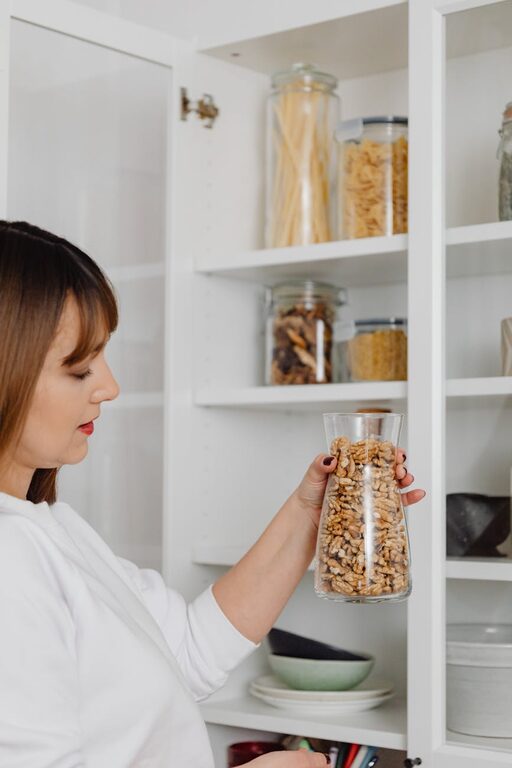
Keeping your fridge and pantry tidy is a great way to streamline your cooking process, save money, and reduce food waste. A cluttered fridge or pantry can make it hard to find ingredients, lead to expired items, and create unnecessary stress. With a few simple habits and organizing tricks, you can create a neat and efficient food storage space that works for you. Here’s how to keep a tidy fridge and pantry.
Why Organizing Your Fridge and Pantry Matters
Before diving into the how-to, it helps to understand why a tidy fridge and pantry are important:
– Easier Meal Prep: Knowing what you have at a glance speeds up cooking and planning.
– Less Food Waste: When items are visible, you’re less likely to forget or let food expire.
– Saves Money: Avoid buying duplicates because you forgot you already had something.
– Keeps Food Fresh: Proper storage extends the life of your groceries.
Step 1: Clear Out and Clean
Start by emptying everything out of your fridge and pantry. This might be the least fun step, but it’s crucial for resetting your space.
– Check Expiration Dates: Toss expired or spoiled items.
– Assess What You Use: Donate unopened non-perishables that you won’t use.
– Clean Shelves: Wipe down surfaces with warm water and mild soap or a gentle cleaning spray.
– Dry Completely: Make sure everything is dry before putting food back to avoid mold and mildew.
Step 2: Group Similar Items Together
Sorting items into groups makes it easier to find what you need and identify when you’re running low.
– For the fridge, common groups include:
– Dairy (milk, cheese, yogurt)
– Meats and deli foods
– Fruits
– Vegetables
– Condiments and sauces
– For the pantry, group items such as:
– Canned goods
– Baking supplies (flour, sugar, baking powder)
– Snacks
– Grains and pasta
– Spices and seasonings
Step 3: Use Clear Storage Containers
Investing in clear, airtight containers can transform your pantry and fridge organization.
– Why Clear Containers?
– Visibility lets you spot what you have at a glance.
– Airtight seals keep food fresh longer.
– Suggestions
– Use labeled containers for dry goods like rice, pasta, and cereals.
– For fridge items like chopped veggies or leftovers, use stackable clear containers.
– Label Everything: Use a label maker or masking tape with a marker to write contents and dates.
Step 4: Arrange Items by Frequency and Type
Place the most-used items at eye level or in the easiest-to-access spots.
– Keep daily essentials like milk, butter, and eggs in front and center.
– Store less frequently used items on higher or lower shelves.
– For the pantry, place heavy items like bags of flour or large bottles on lower shelves.
– Consider using baskets or bins to hold smaller or similar items together.
Step 5: Maintain Proper Temperature and Storage Practices
Knowing how to store foods optimally in your fridge and pantry can prolong freshness.
– Fridge Temperature: Keep your fridge between 35°F and 38°F (1.7°C – 3.3°C).
– Pantry Temperature: Store dry goods in a cool, dark place away from heat or moisture.
– Vegetables and Fruits: Keep fruits and vegetables separate where possible, as some fruits emit gases that can cause veggies to spoil faster.
– Avoid Overcrowding: Good air circulation inside your fridge and pantry helps maintain consistent temperatures.
Step 6: Develop a Routine for Regular Checks
Keeping your fridge and pantry tidy requires ongoing attention.
– Once a week, take a quick inventory and move older items to the front.
– Wipe spills immediately to avoid sticky messes and pests.
– Before grocery shopping, glance at your storage areas to create a shopping list and avoid unnecessary purchases.
Additional Tips for a Tidy Fridge and Pantry
– Use Lazy Susans: Turntable organizers make it easier to reach items at the back.
– Stack Vertically: Use stackable containers and shelf risers to maximize vertical space.
– Keep a Notepad: Place a small whiteboard or notepad on the fridge door for jotting down what’s running low.
– Store Leftovers in Portion Sizes: Using smaller containers helps with portion control and reduces clutter.
– Freeze Items Properly: If you buy in bulk, separate and freeze portions to keep your fridge and pantry less crowded.
Final Thoughts
Organizing your fridge and pantry doesn’t have to be overwhelming. By breaking the task into manageable steps and maintaining regular habits, you can enjoy a cleaner, more efficient kitchen space. Not only does a tidy storage area save time and money, but it also brings peace of mind every time you open your fridge or pantry door.
Try these tips today, and notice how much easier cooking and grocery shopping become!

